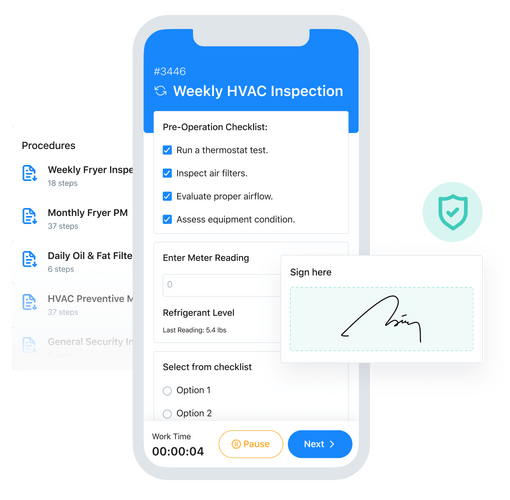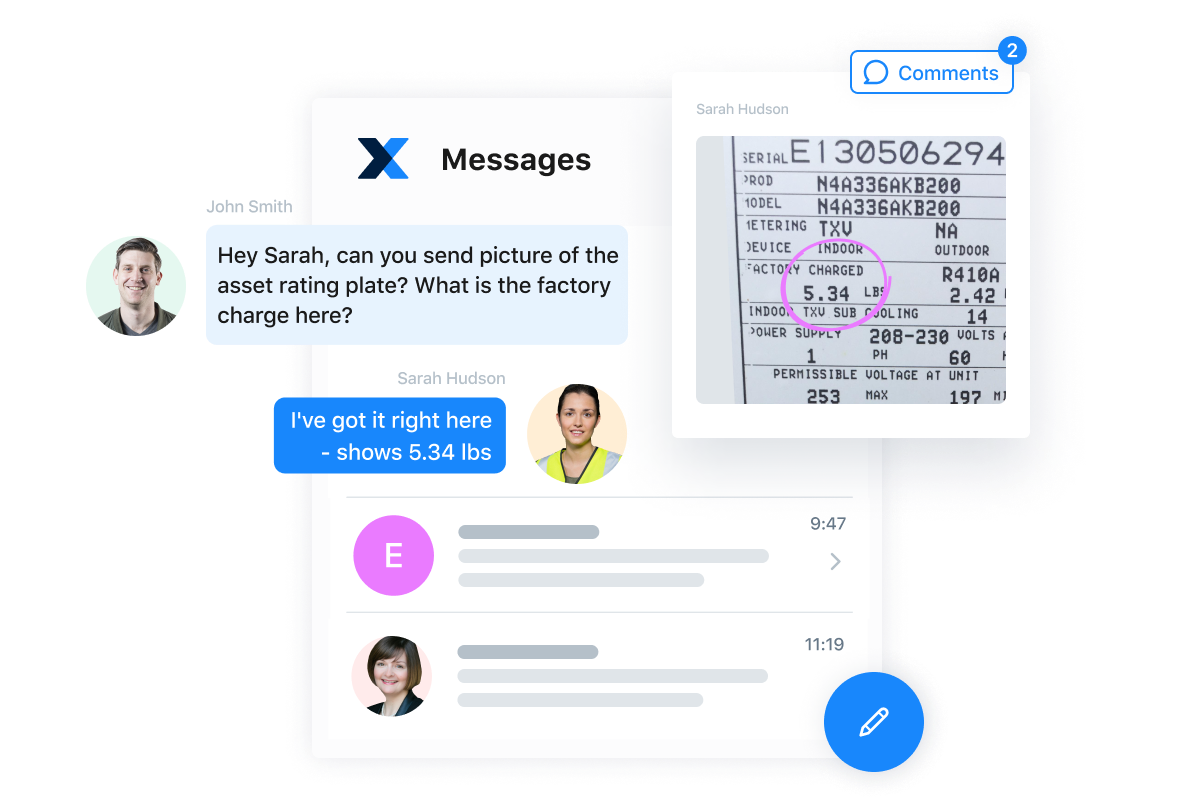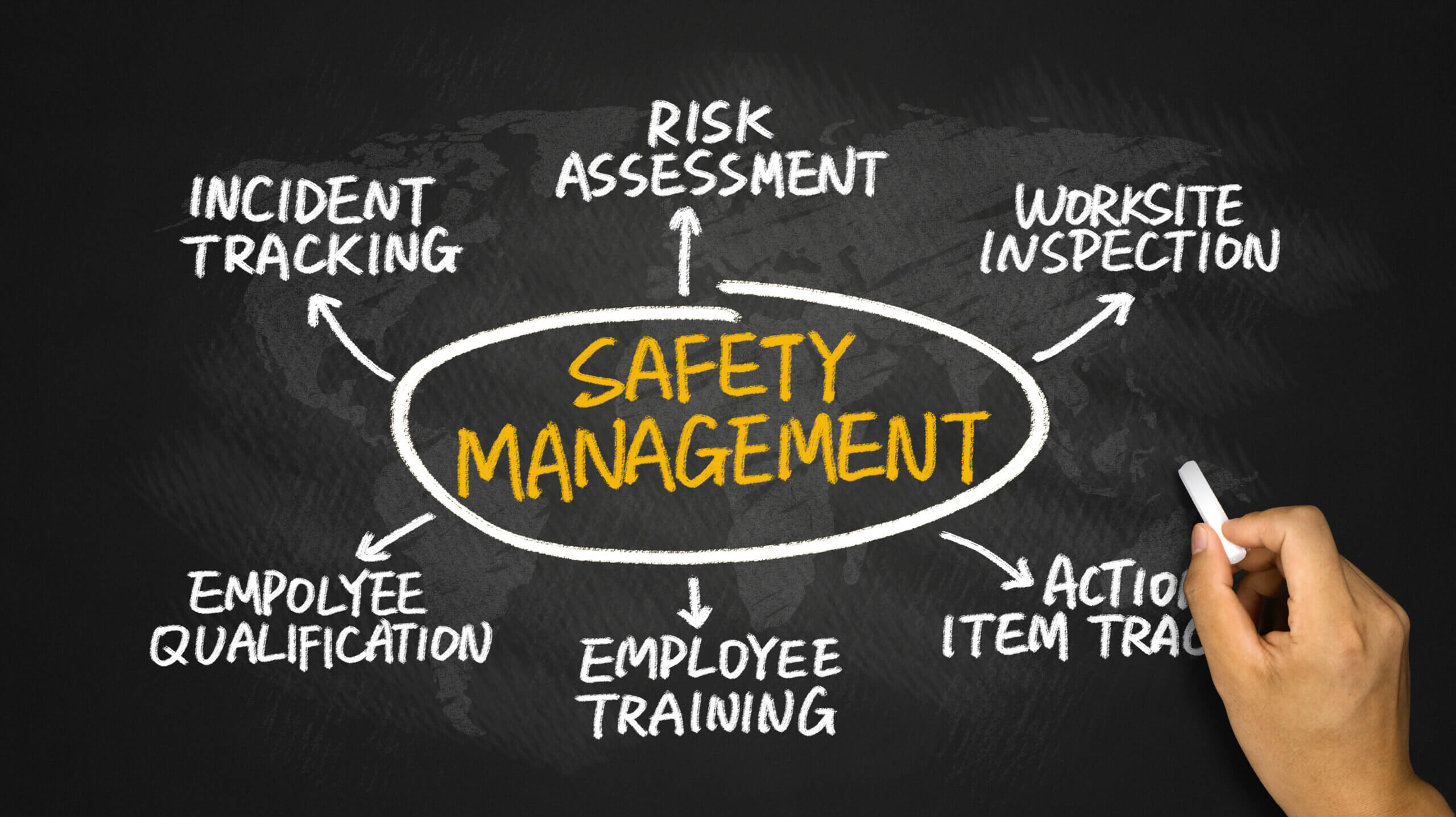
In this article, we’ll provide some workplace safety tips worth implementing within your organization. Since plenty of resources around handwashing, cleaning, and sanitation are already in circulation, this article will focus on operational safety measures.
As mentioned by Safeopedia, the most common workplace hazards are:
- Lack of effective housekeeping.
- Ignorance and negligence.
- Inadequate training.
- Taking shortcuts.
- Poor preplanning.
- Complacency.
- Distractions.
It’s more important than ever for employers to implement risk management and workplace safety procedures.

6 Workplace Safety Tips to Implement Now
Most employers understand the importance of safety in the workplace. Many of them even have standard operating procedures in place to prevent incidents from occurring.
So, why are so many workplace injuries taking place? Oftentimes, the problem isn’t insufficient guidelines—it’s poor compliance.
But that’s not to only place blame on the shoulders of employees. Managers can adopt lax attitudes regarding routine safety procedures.
In other cases, organizations simply don’t have proper systems in place to reinforce workplace safety requirements for workers. It’s not enough to explain safety hazards during onboarding and never talk about them again. This is why tip No. 1 on our list is important!
1. Stick to Standard Operating Procedures
For some industries, taking shortcuts isn’t just irresponsible—it’s dangerous.
Standard operating procedures (SOPs), especially for heavy machinery, can improve workplace safety besides improving efficiency. It’s essential for employees to use each piece of equipment and tool as indicated per safety guidelines.
As an employer, you must ensure all employees are trained on the latest emergency procedures for their respective duties. They also should have copies of SOP documents for easy reference. We recommend using connected workforce software like MaintainX to digitize, assign, fulfill, and oversee SOP checklists from mobile devices.

In addition, pay particular attention to new hires. According to the Toronto Institute for Work and Health, new employees were three times more likely to suffer workplace injuries than experienced employees.
Ensure they completely understand SOPs before being posted to their workplaces. SOP accessibility is paramount to improving compliance and workplace safety. It’s the shared responsibility of every member of the organization to create a safe workplace.

2. Provide Personal Protective Equipment
Our next workplace safety tip has to do with materials. If you’re in an industry where workers are exposed to mechanical, electrical, radiological, and chemical hazardous materials, insist on personal protective equipment (PPE) for your employees.
Essential safety equipment for industrial workers includes earplugs and muffs, gloves, safety glasses, safety boots, respirators, hard hats, vests, coveralls, and full suits. Read the Occupational Safety and Health Administration (OSHA) standards regarding PPEs.

3. Encourage Consistent Breaks
Doing the same task over and over can result in boredom, exhaustion, and complacency. These are some of the most common contributing factors to work environment injuries. And it’s why your employees should take regular breaks from their jobs.
Put simply, it’s just plain common sense. Regular breaks help keep workers alert, attentive, and motivated to do their best. It’s particularly crucial to insist on recommended breaks for commercial drivers, as mandated by the Federal Motor Carrier Safety Administration (FMCSA) regulations.

4. Facilitate Correct Posture
According to the Mayo Clinic, maintaining good posture can help prevent injuries. Desk employees should take special care to sit upright in ergonomic chairs to prevent back and neck problems. Likewise, employees lifting and moving heavy objects should:
- Use both hands when carrying items.
- Test object weights before picking them up.
- Hold objects close to their bodies for support.
- Wear back braces when lifting from the knees.
- Keep their backs straight and avoid stooping or twisting.
- Ask for assistance before lifting exceptionally heavy things.
Forklift drivers should take extra precautions by following these guidelines when using a forklift or any other powered machine to move objects.
5. Report Unsafe Conditions
Lastly, you should put in place mechanisms for employees to report unsafe behaviors and situations. It will enable you to take care of problems before they result in a casualty.
Encourage your employees to use those mechanisms to improve workplace safety without the fear of reprisal. If you don’t, they are within their rights to use OSHA’s whistleblower program to report your organization for the infringement on workers’ rights. But, to be fair, it doesn’t ever have to get to that point!

We recommend leveraging digital solutions such as MaintainX CMMS that allow employees to maintain back-and-forth communication with upper management. The app’s team messaging feature allows users to send messages to groups and individuals in real time.
Digitizing incident reports also enables management to update employees on emerging hazards quickly and easily. In addition, MaintainX team messaging makes it easy to notify the entire team when Lockout Tagout procedures are in place.
6. Check-In Regularly
Employers should regularly check in with their employees to find out how procedures are being implemented safely on the ground. Sometimes, procedures that may seem like great ideas on paper fail to translate in actual workplace environments.
Ask workers for feedback on the effectiveness of your workplace safety training programs. Find out which guidelines are easy to follow and which ones are not.
According to the National Safety Council (NSC), U.S. employers lost $171 billion in 2019 due to workplace accidents. You can avoid these losses by approaching workspace safety as a collective concern involving everyone in the organization.

Consequences of Not Following Workplace Safety Tips
What are the consequences of non-compliance with workplace safety guidelines?
Your employees will be at risk of suffering serious injuries, illnesses, and even death. This not only can impact their quality of life but also their dependents. But that’s not all. Other consequences of failing to enforce safety guidelines include:
- Tarnished Reputations: A trustworthy public image is vital to the longevity of an organization. Seventy-four percent of consumers prefer buying from companies that provide safe working conditions for their employees.
- Decreased Productivity: Workplace injuries dampen employee morale, which can negatively impact productivity. Not to mention there’s the additional risk of employee turnover because workers feel unsafe, unsupported, and unappreciated.
- Extraordinary Expenses: Just one major accident can cause a chain effect of substantial financial loss. Companies must factor in financial losses resulting from employee recovery times. In addition, serious incidents resulting in legal action can take years to resolve.
- Legal Repercussions: Violating safety guidelines can have profound legal repercussions, including hefty penalties. There’s also the possibility of jail sentences.
Streamline Safety Compliance with MaintainX
Employers must minimize potential safety hazards, foster safety-oriented cultures, and maintain safe work environments for the employees who work hard on their behalf.
Not only is it the law, but it’s just the right thing to do. Improve safety compliance by a) seeking to better understand the hazards employees face on the job and b) making safety checklists accessible enough to actually get used!
MaintainX is a work order toolkit that helps managers streamline safety compliance with digital procedures. The mobile-friendly software allows employees to follow checklists from the convenience of their smartphones, send instant messages, and sign off in real time.
FAQs

Caroline Eisner is a writer and editor with experience across the profit and nonprofit sectors, government, education, and financial organizations. She has held leadership positions in K16 institutions and has led large-scale digital projects, interactive websites, and a business writing consultancy.




















